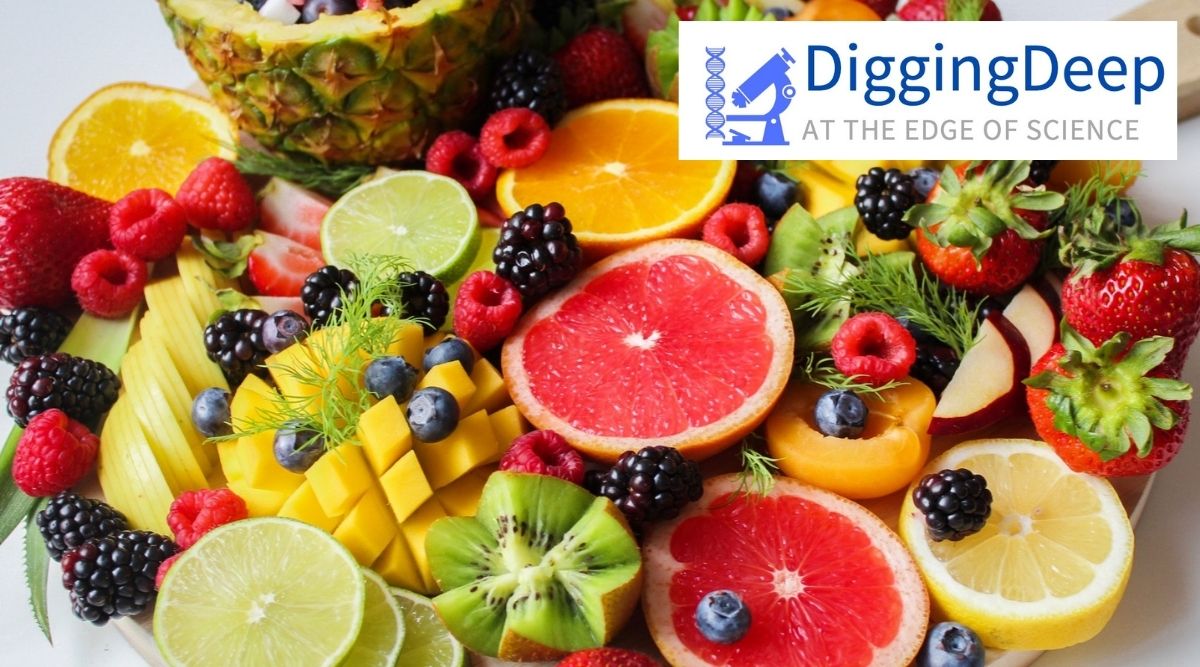 The flavour of any food item is a product of a complex interaction between its genetics and the environment, that renders it a specific chemical composition in terms of sugars/acids and volatile organic compounds (VOCs). Picture for illustrative purpose. (Image credit: Trang Doan from Pexels)
The flavour of any food item is a product of a complex interaction between its genetics and the environment, that renders it a specific chemical composition in terms of sugars/acids and volatile organic compounds (VOCs). Picture for illustrative purpose. (Image credit: Trang Doan from Pexels) Unlike fruit size and yield, flavour is one phenotypic characteristic that is difficult to quantify in the real world. So, how can breeders and farmers over the world select for a certain flavour over others (and have happier customers)? In an attempt to answer this question, a team of researchers from University of Florida examined over a 100 different tomato and blueberry accessions from the University’s breeding programme.
These accessions included commercial cultivars and heirloom varieties. Heirloom or heritage varieties refer to those that are grown in a small isolated pockets, and are not as widespread as their commercially produced counterparts.
The study involved taking each of these accessions and correlating their metabolome with their respective consumer panel ratings. The metabolome refers to a compendium of all chemical reactions taking place inside the cell of an organism i.e. the full set of metabolites, and is a direct window into the ‘physiological state of the organism.’ The consumer sensory panels consisted of 80 participants on an average from various ethnic- and age-groups to account for flavour perception with attributes like sweetness, sourness, flavour intensity and overall liking on a 100-point scale.
This novel method has an advantage over other similar studies in that they usually consisted of sensory preferences of a few individuals and were, therefore, prone to error and bias. Not only that, it offered scientists a more direct glimpse into flavour preferences, which, until now, have conventionally been quantified on the basis of acid content, soluble solids and firmness.
The aforementioned exercise was preceded by predictions flavour perceptions based on its chemical profile. These predictions were made using a total of eighteen mathematical models prior to the metabolome—consumer sensory panel correlations.
The flavour of any food item is a product of a complex interaction between its genetics and the environment, that renders it a specific chemical composition in terms of sugars/acids and volatile organic compounds (VOCs). While sugars and acids are perceived by the tongue, VOCs are sensed by the nose. So, can the exercise underpin the various chemicals and pathways that are responsible for the flavour of the fruit, and ‘predict how flavourful a fruit will be’? And, if successful, will ascertaining the metabolome of a fruit enable breeders to target specific genetic makeups (hereinafter, ‘genotype’) that determine those physical traits?
It was found that nearly 59% of the flavour perceptions (measured as ‘overall liking’) – in both tomatoes and blueberries – were determined by volatile organic compounds (VOCs). On the other hand, sugars/acids were found to account for nearly 77% of sourness in tomato and 66% sweetness in blueberries. Glucose and fructose – both sugars – were found to be the main drivers of sweetness in both tomatoes and blueberries as well as ‘overall liking;’ while acids were the most responsible for sourness. Volatile compounds were grouped by the biochemical pathways. Flavour in tomato was largely determined by volatiles derived from phenylalanine and lipids; whereas that in blueberries was largely determined by volatiles derived from lipids, esters, carotenoids and terpenoids.
When researchers employed the genetic sequence, for 70 varieties of tomatoes for which they had full genome sequences, to predict consumer sensory ratings, they found that ‘metabolomic selection outperformed genomic selection in the prediction of all these complex traits, especially for sweetness and overall flavour liking.’
A key takeaway of the study, therefore, is the association of a metabolome profile with a certain genotype. This enables agriculturalists to make better-informed selections from a wide variety of genotypes – and, ultimately, have a happier customer at the end of the day. Its authors, however, caution that the contribution of specific chemicals to overall liking of the fruit will depend on cultural preferences and the ethnic/geographic composition of the sample we choose to study.
The author is a research fellow at the Indian Institute of Science (IISc), Bengaluru, and a freelance science communicator. He tweets at @critvik
- The Indian Express website has been rated GREEN for its credibility and trustworthiness by Newsguard, a global service that rates news sources for their journalistic standards.

